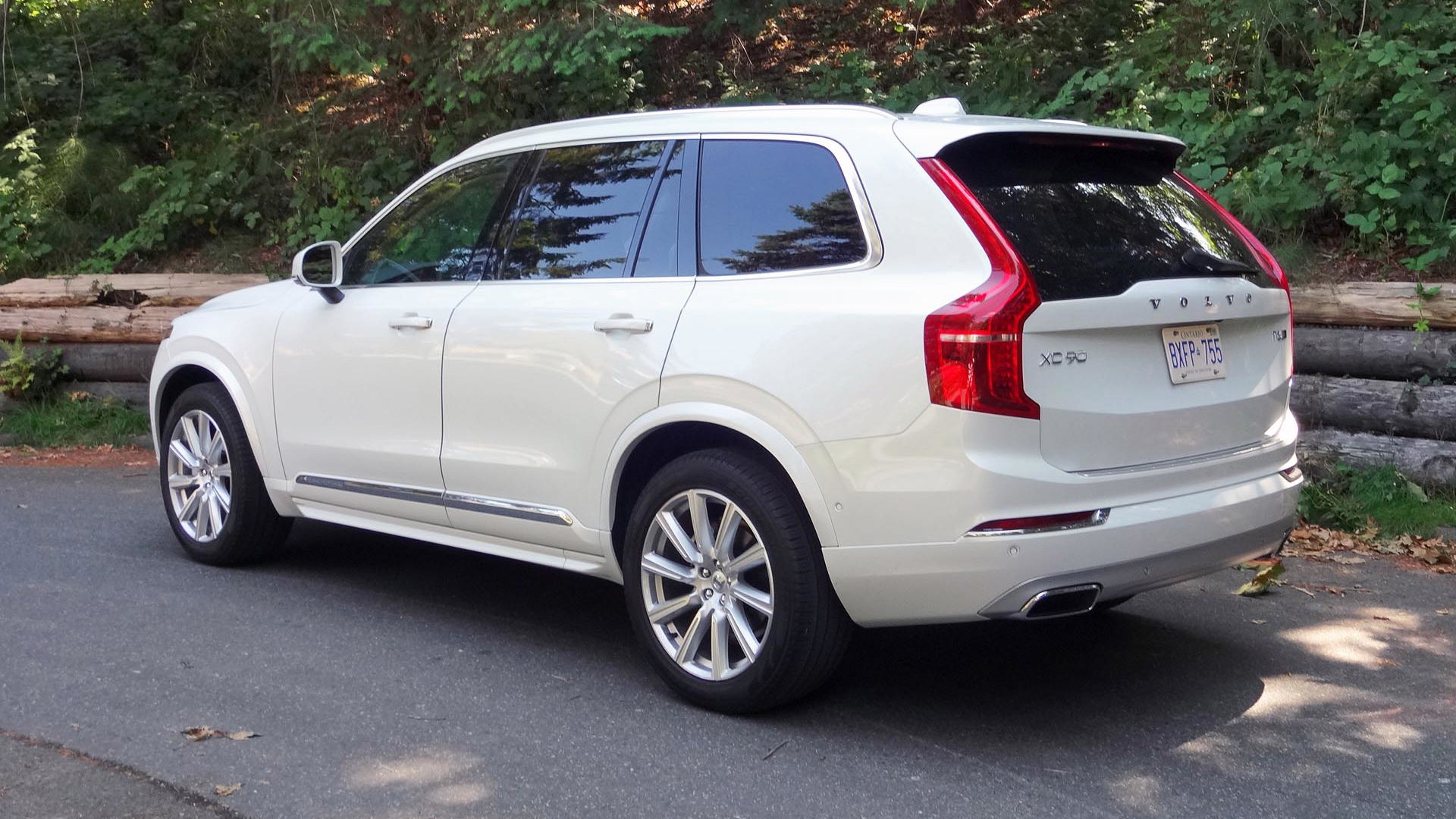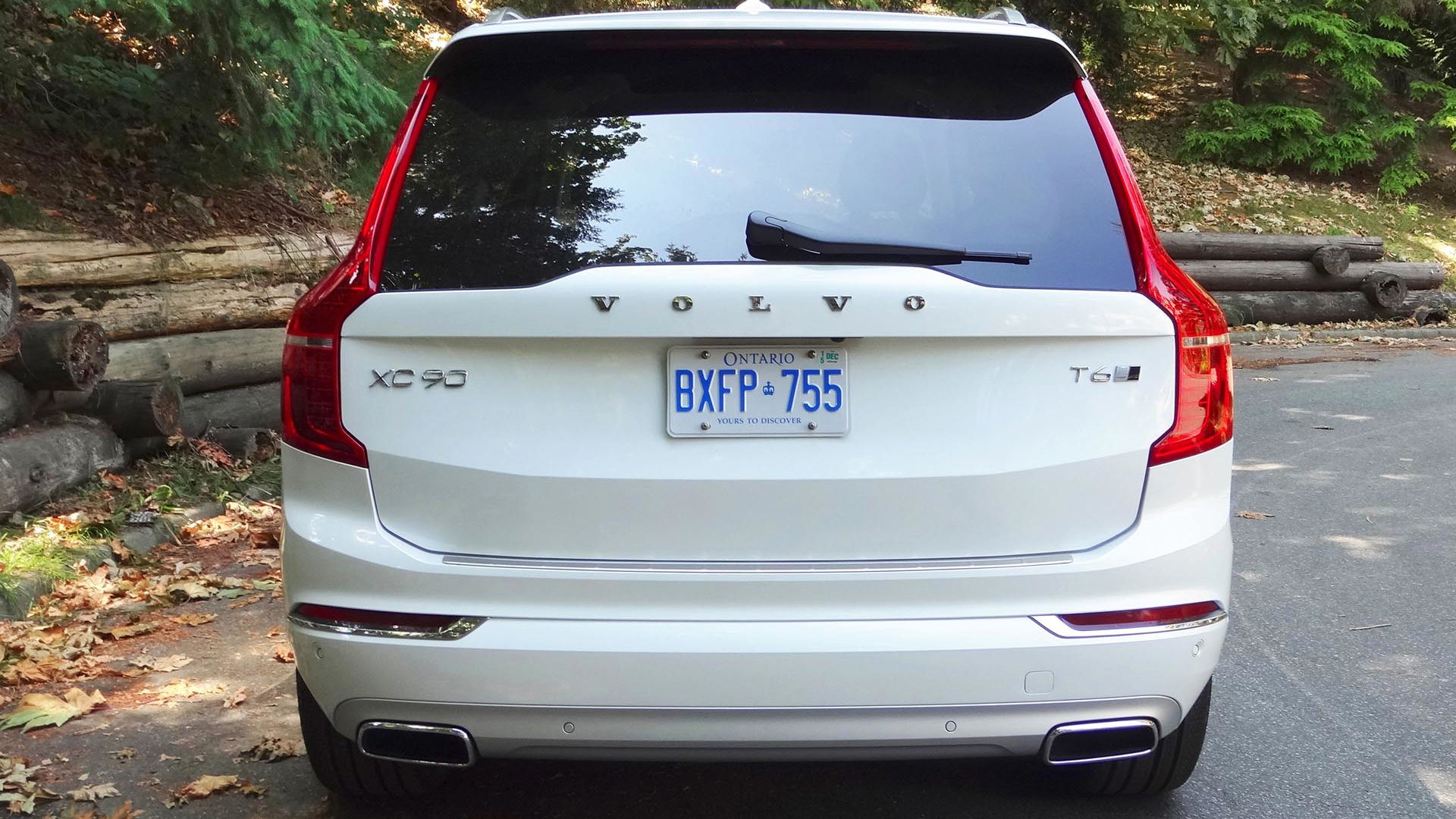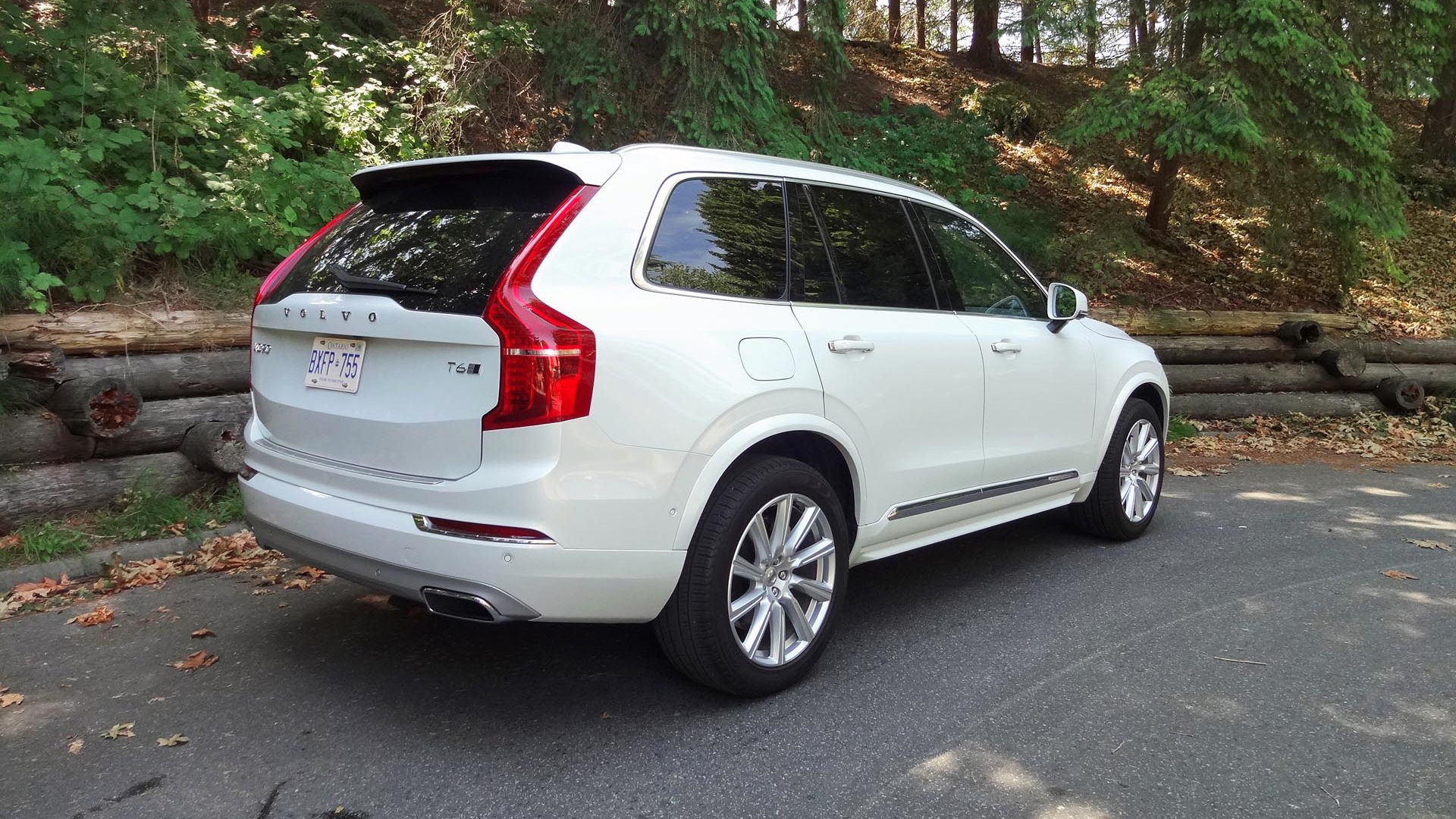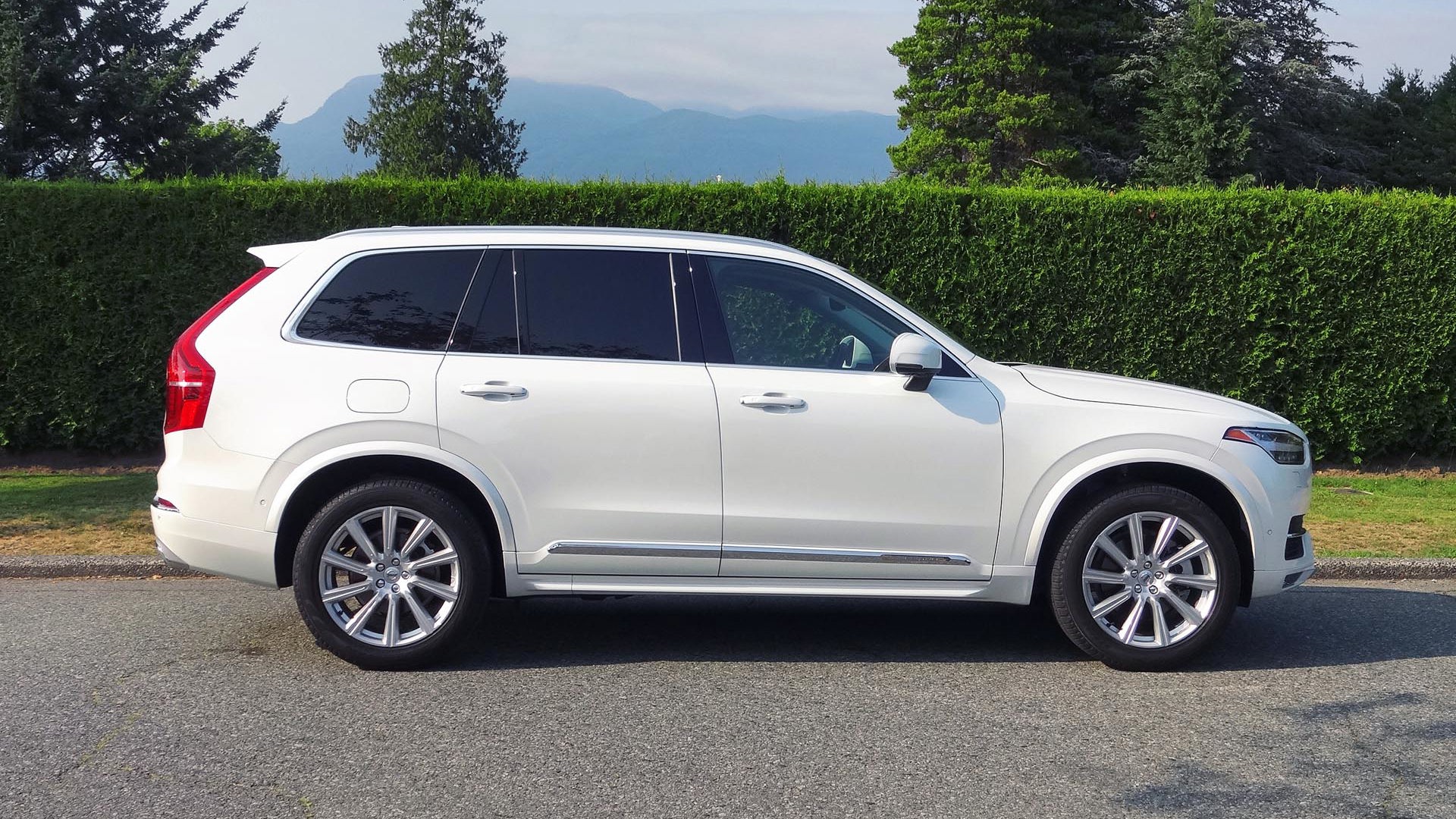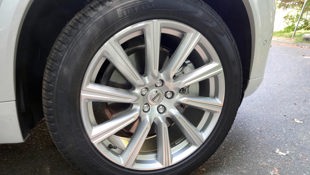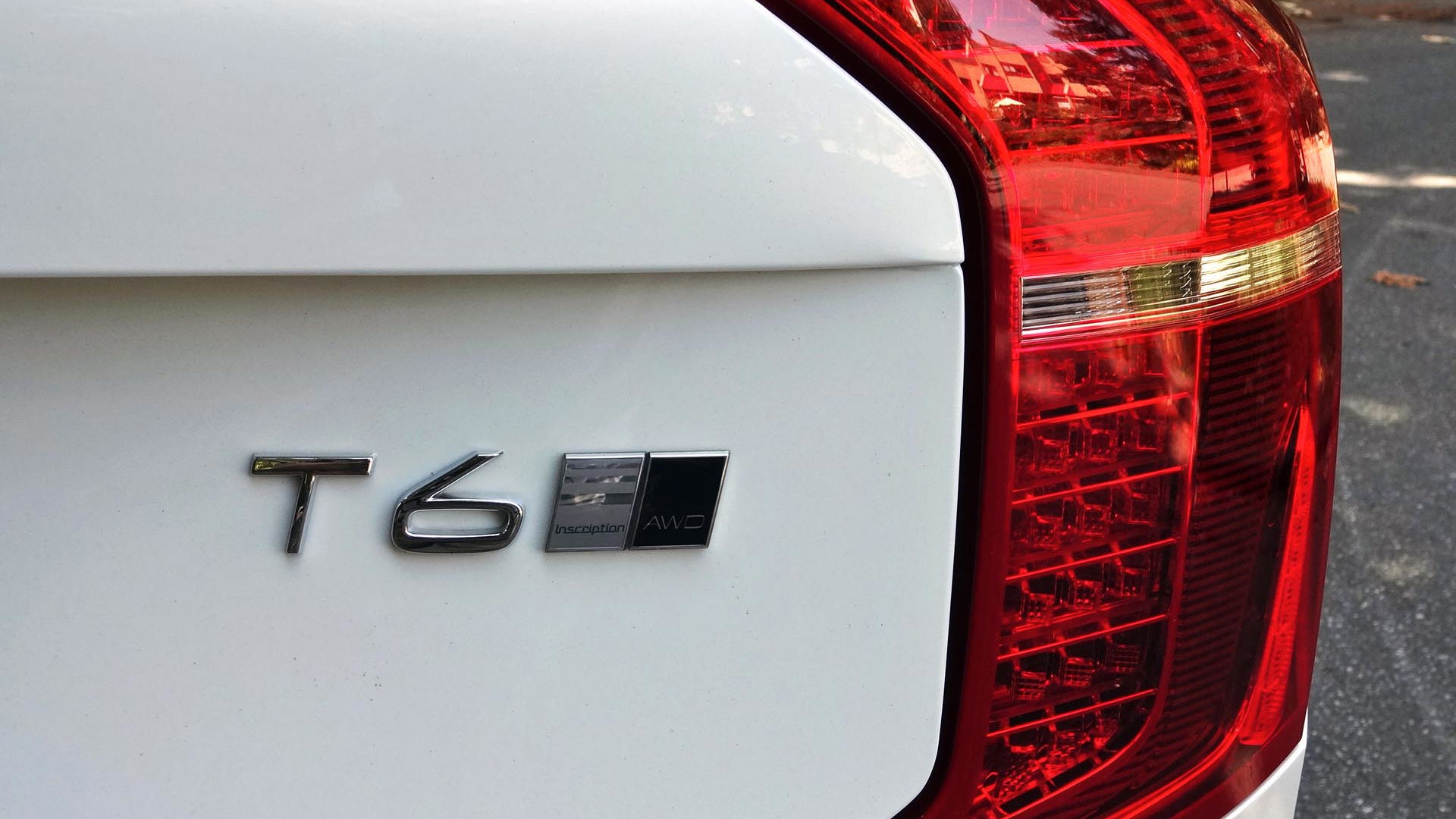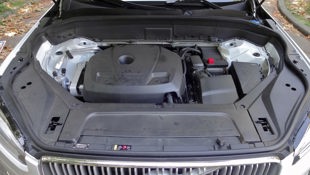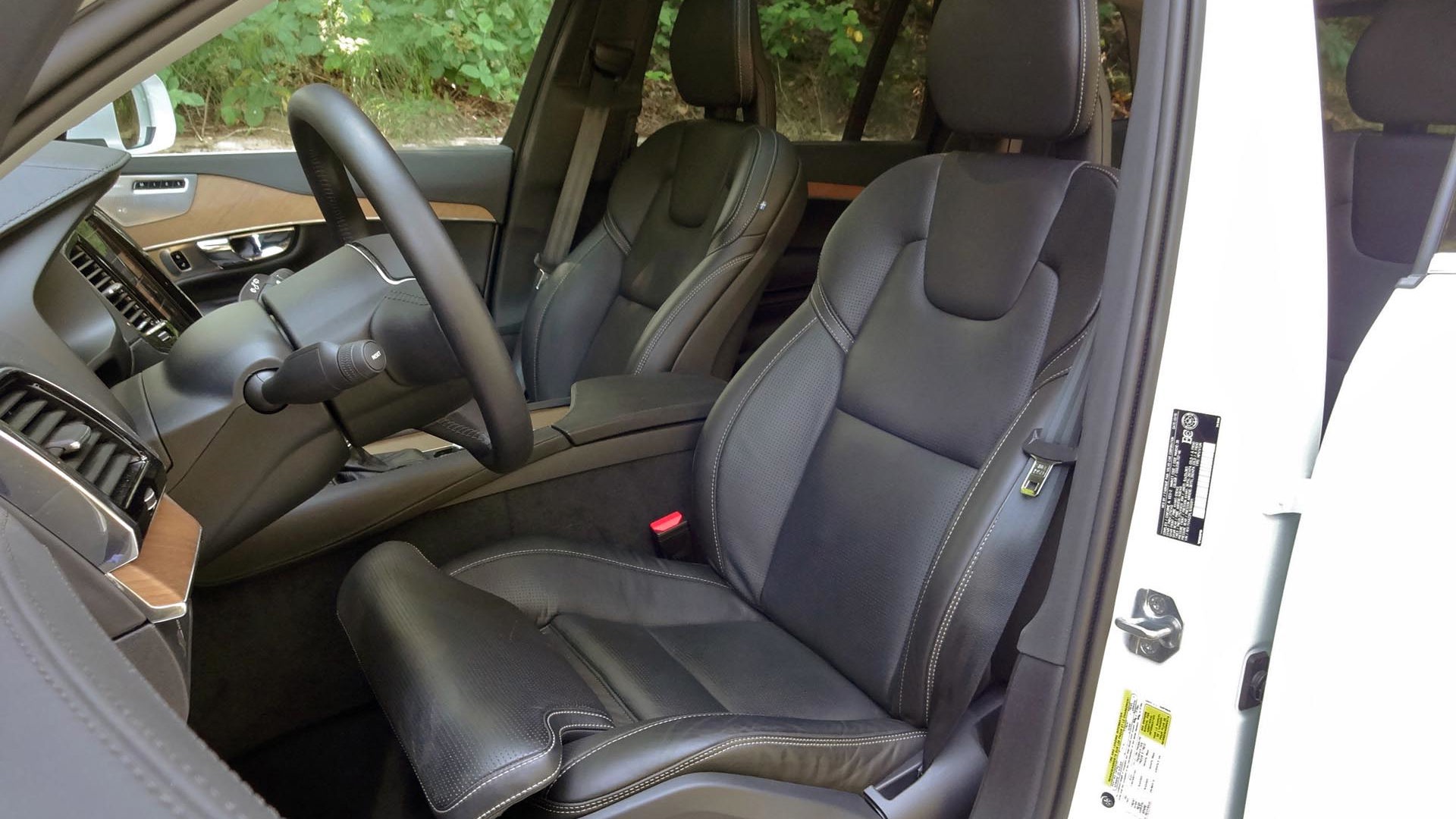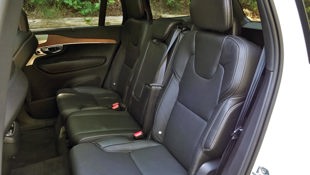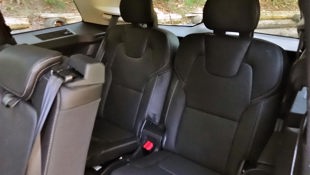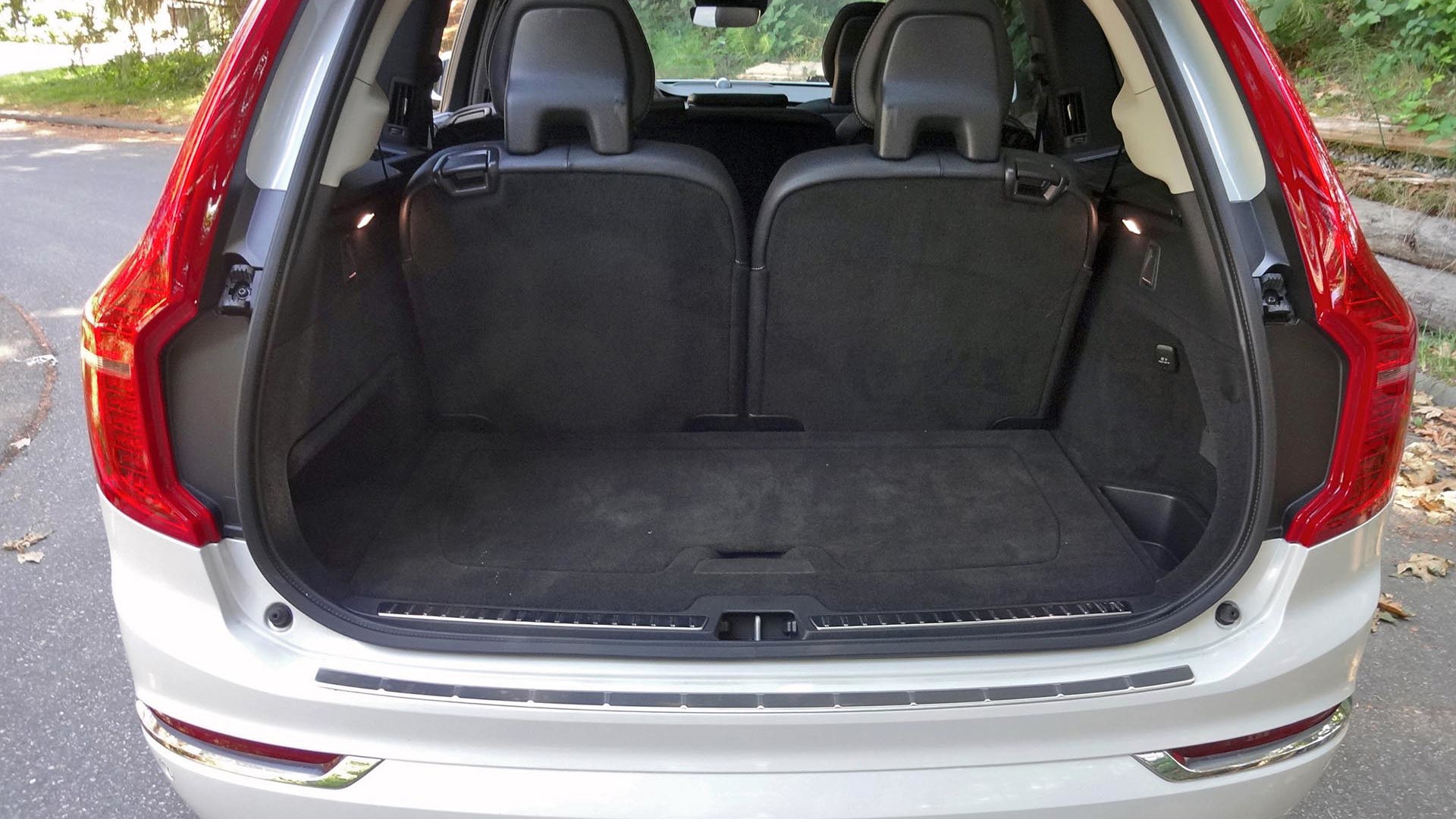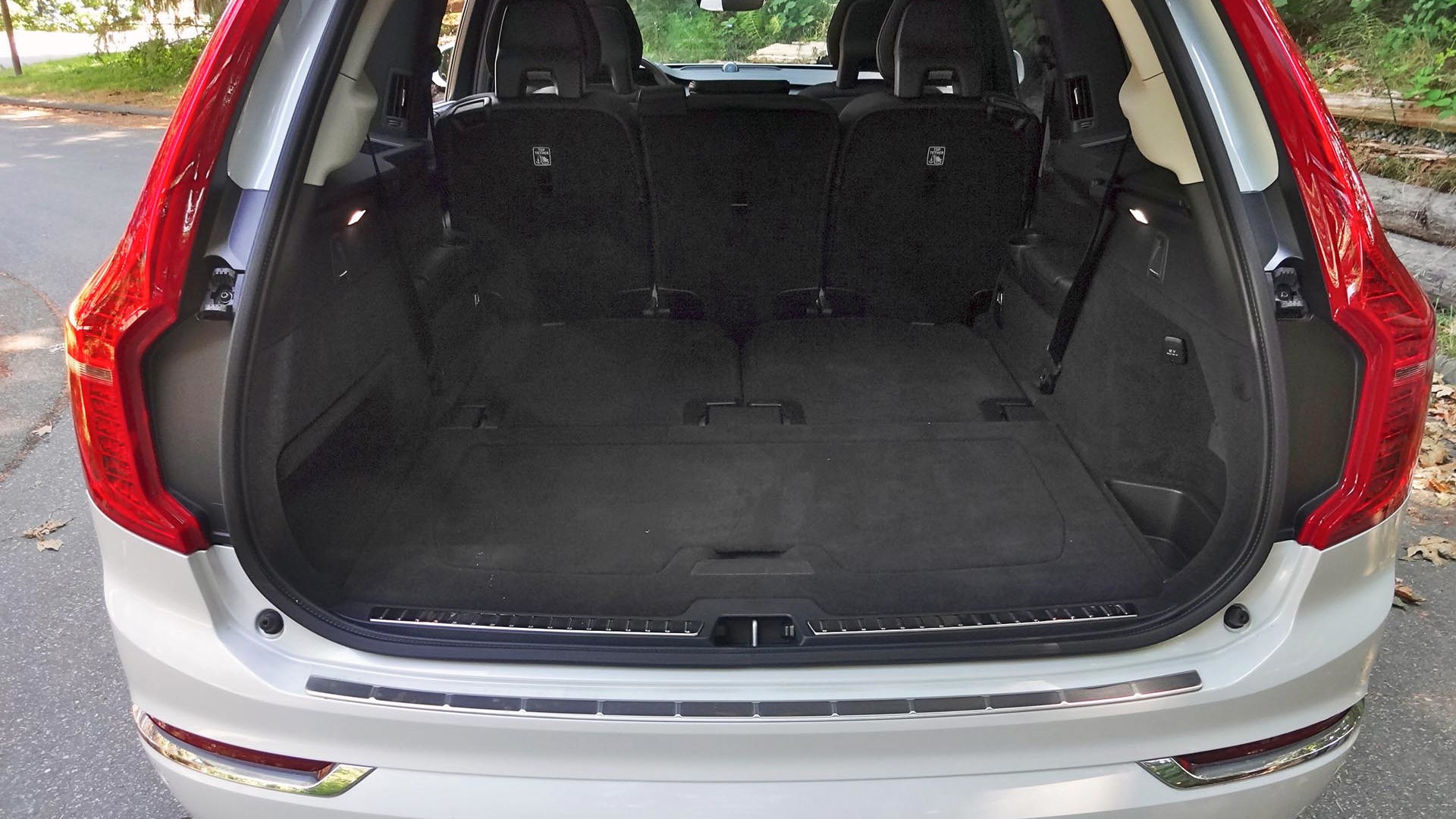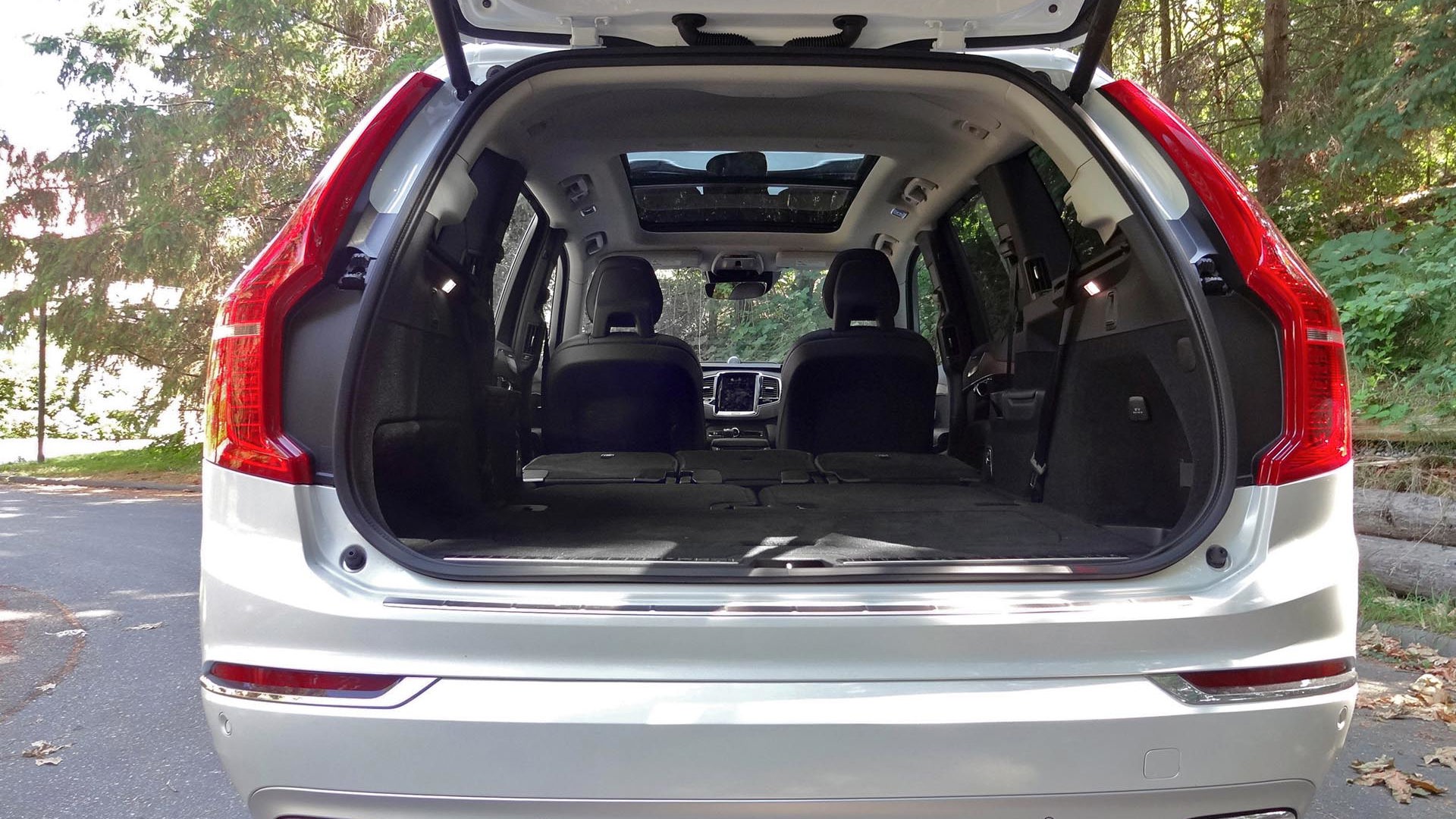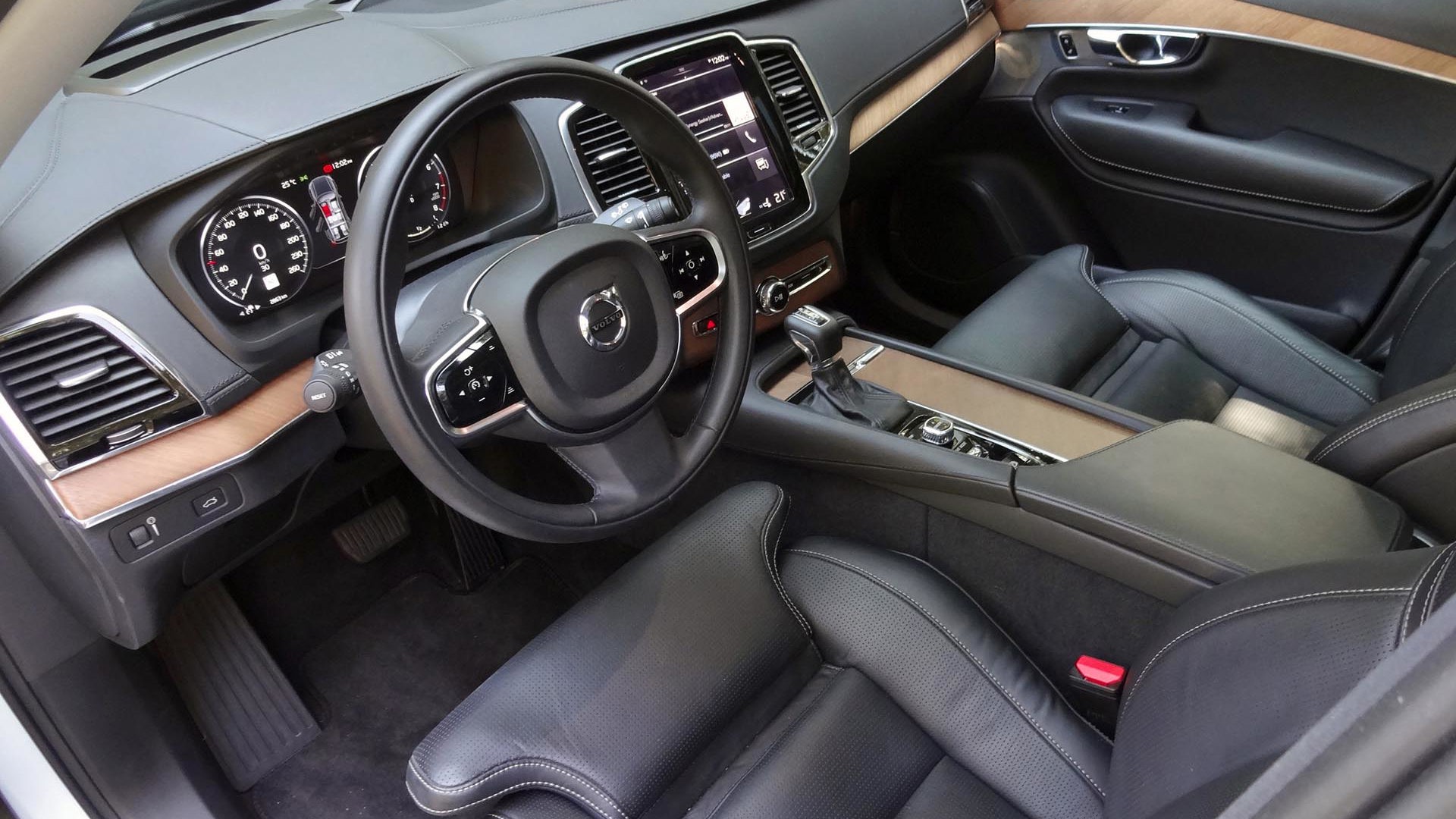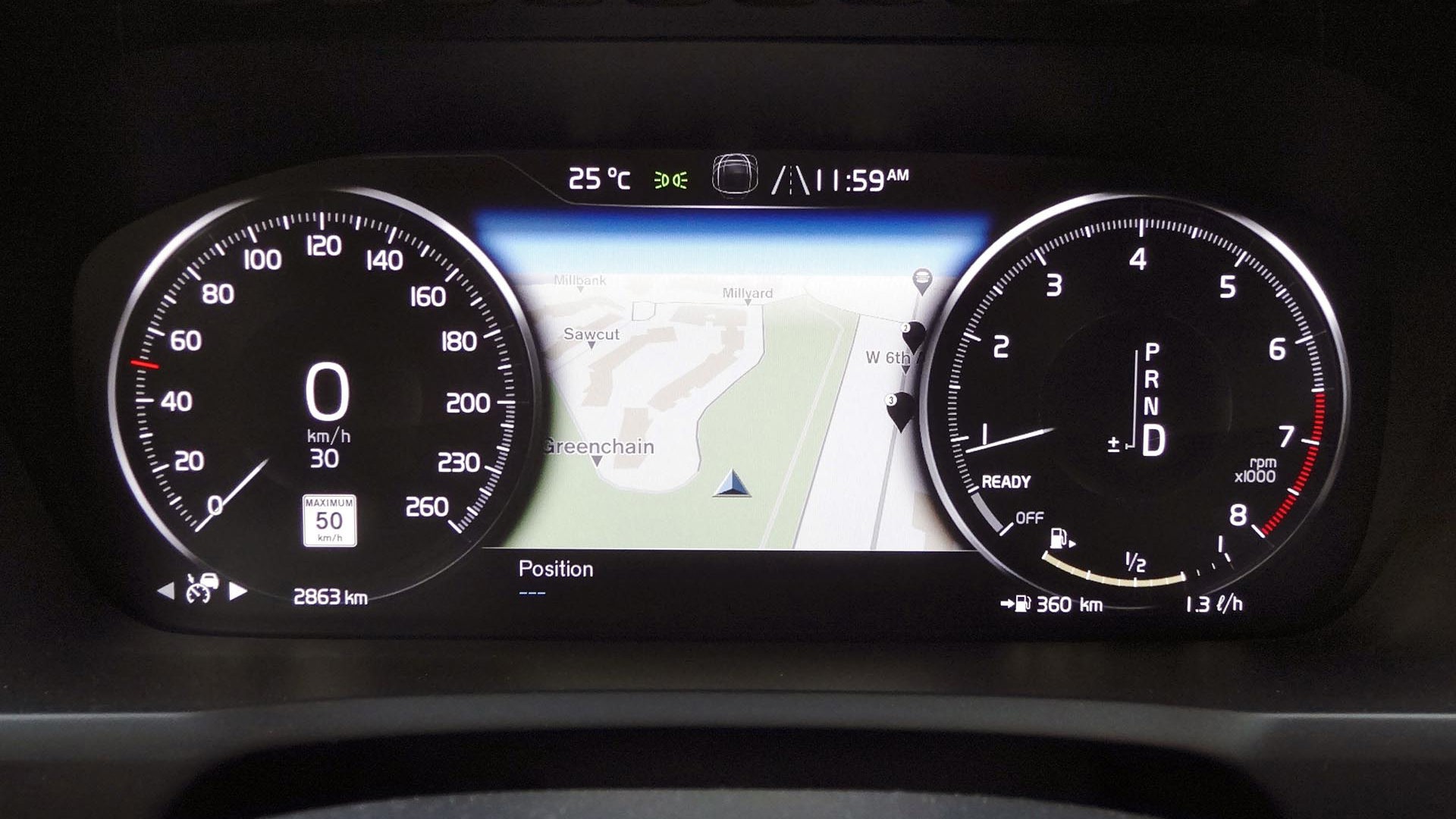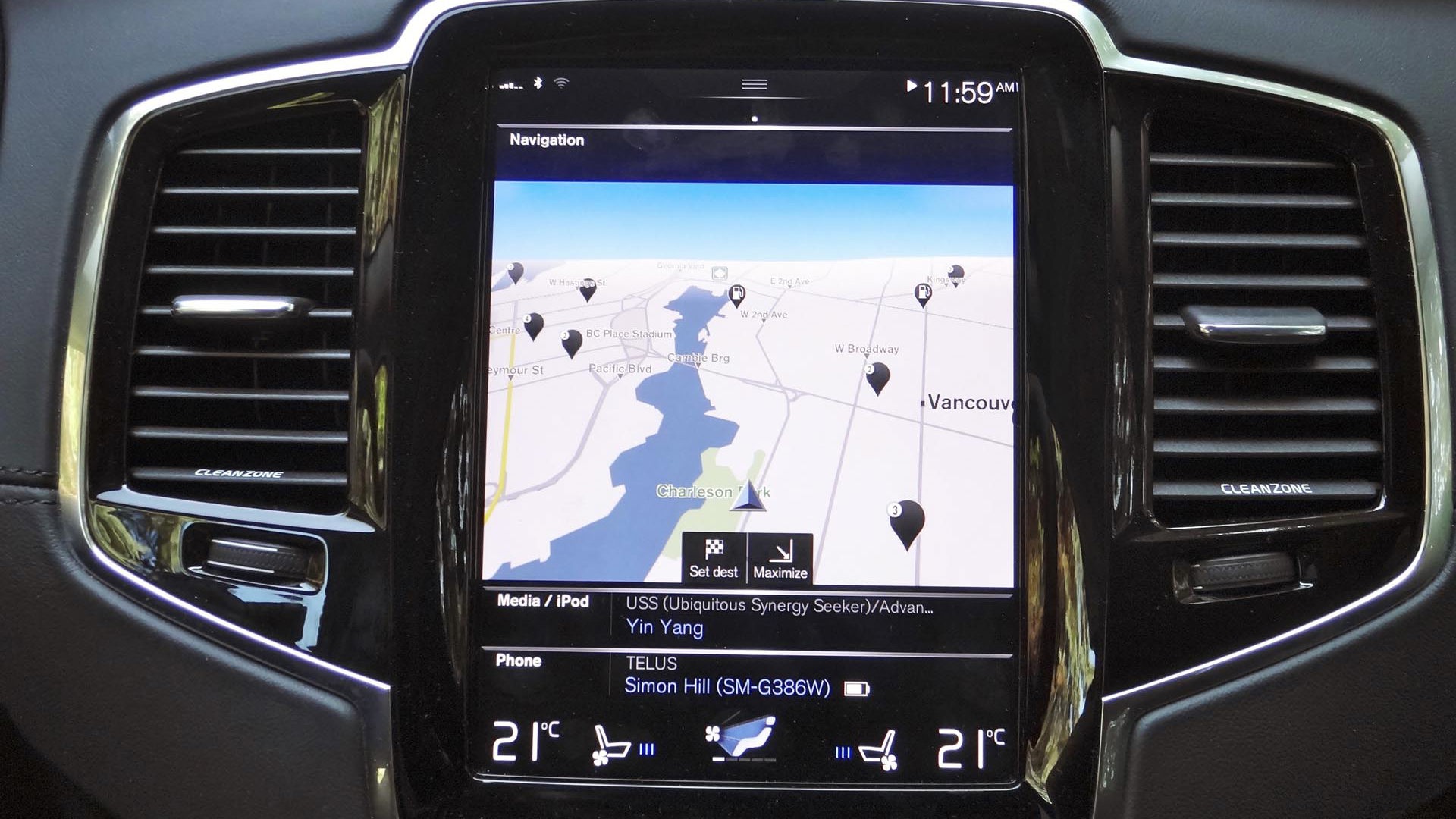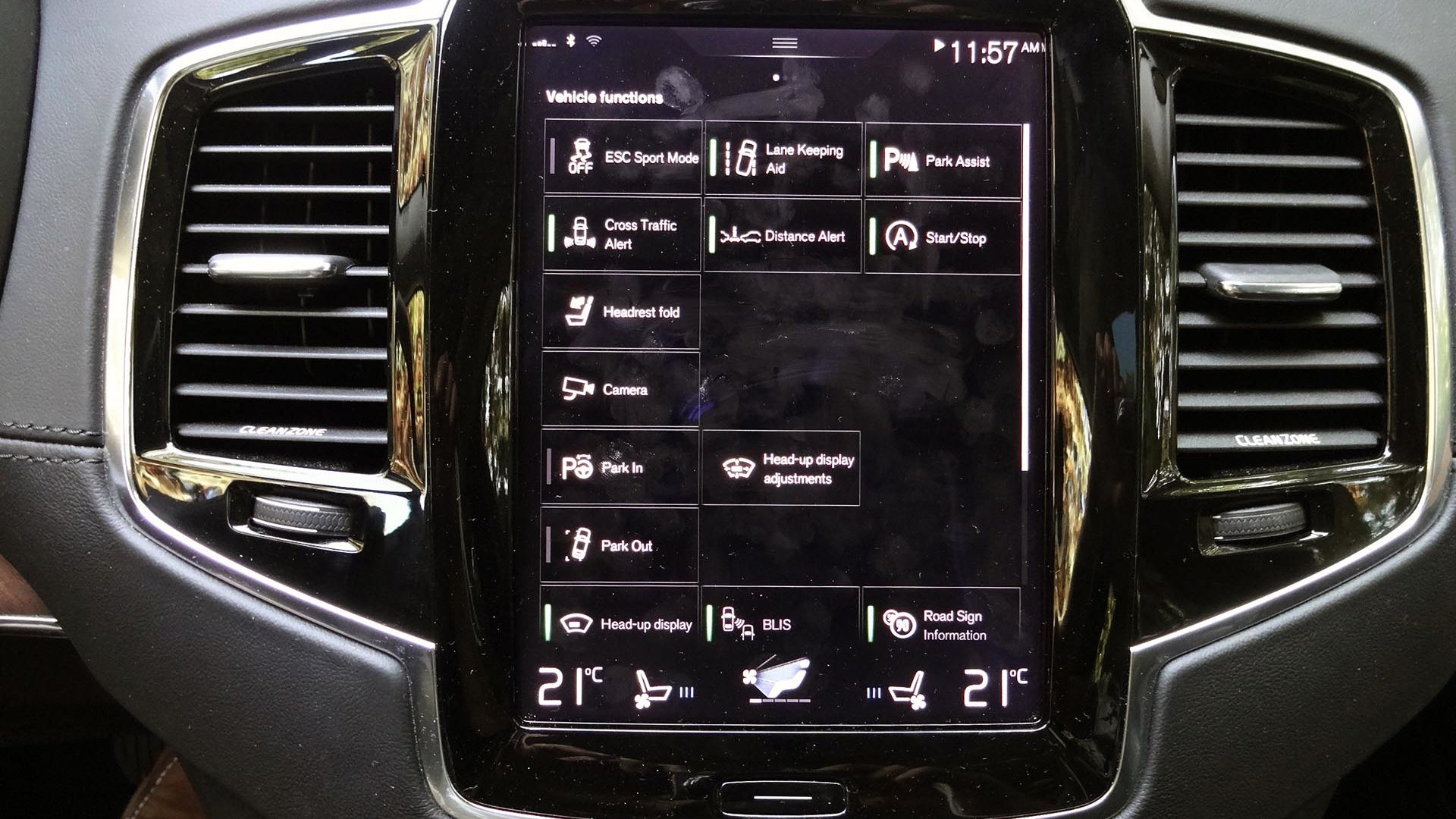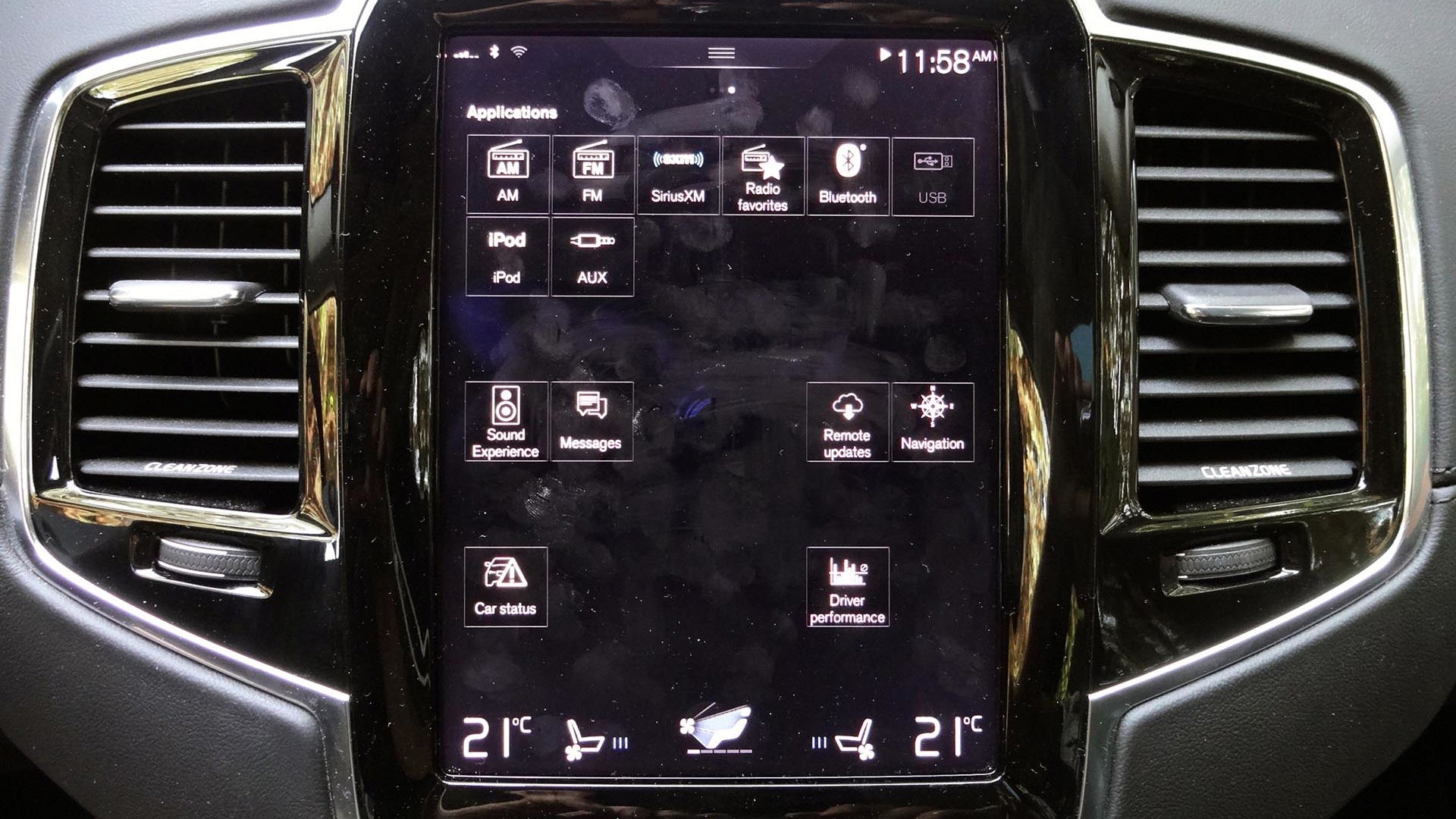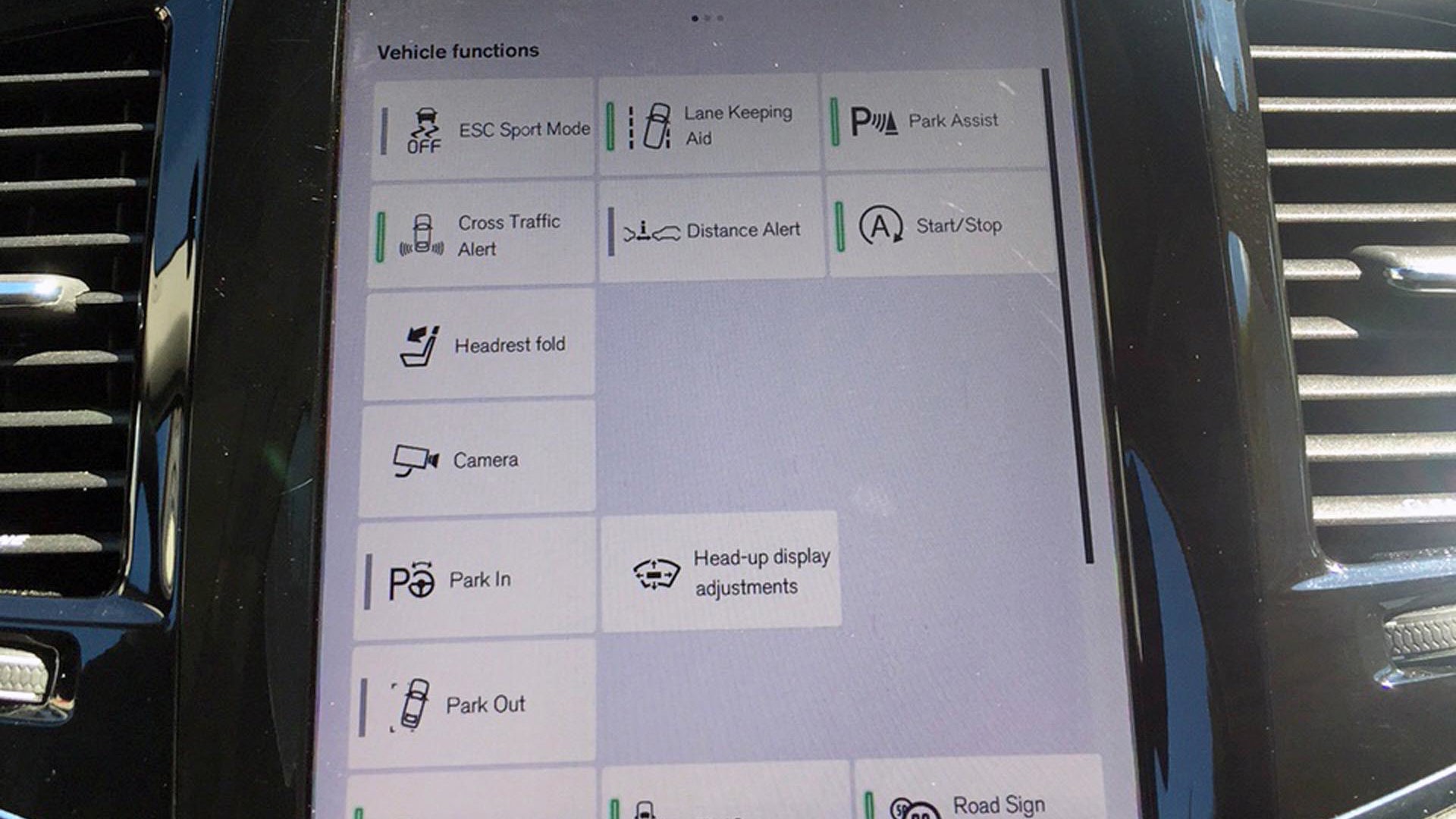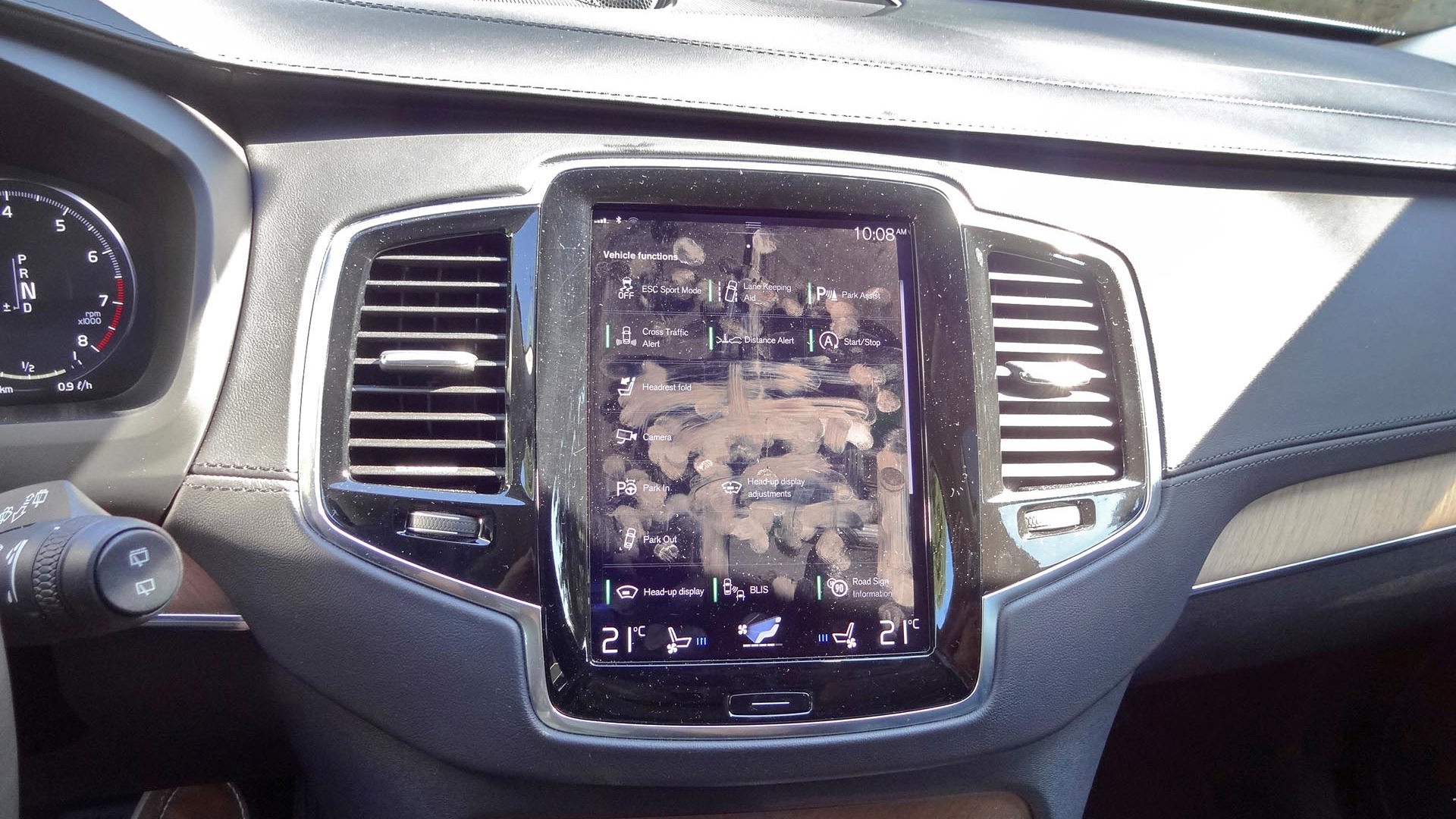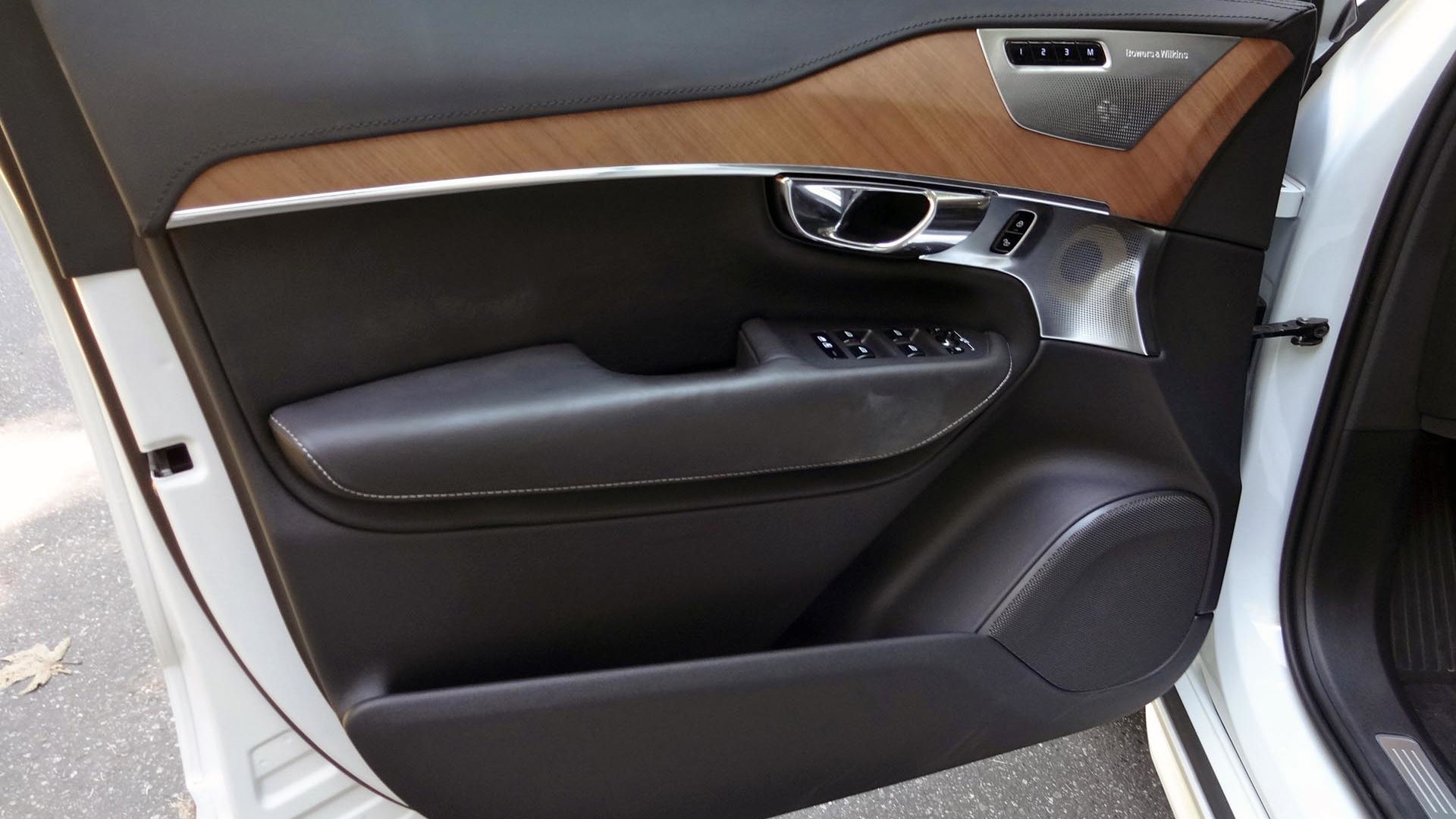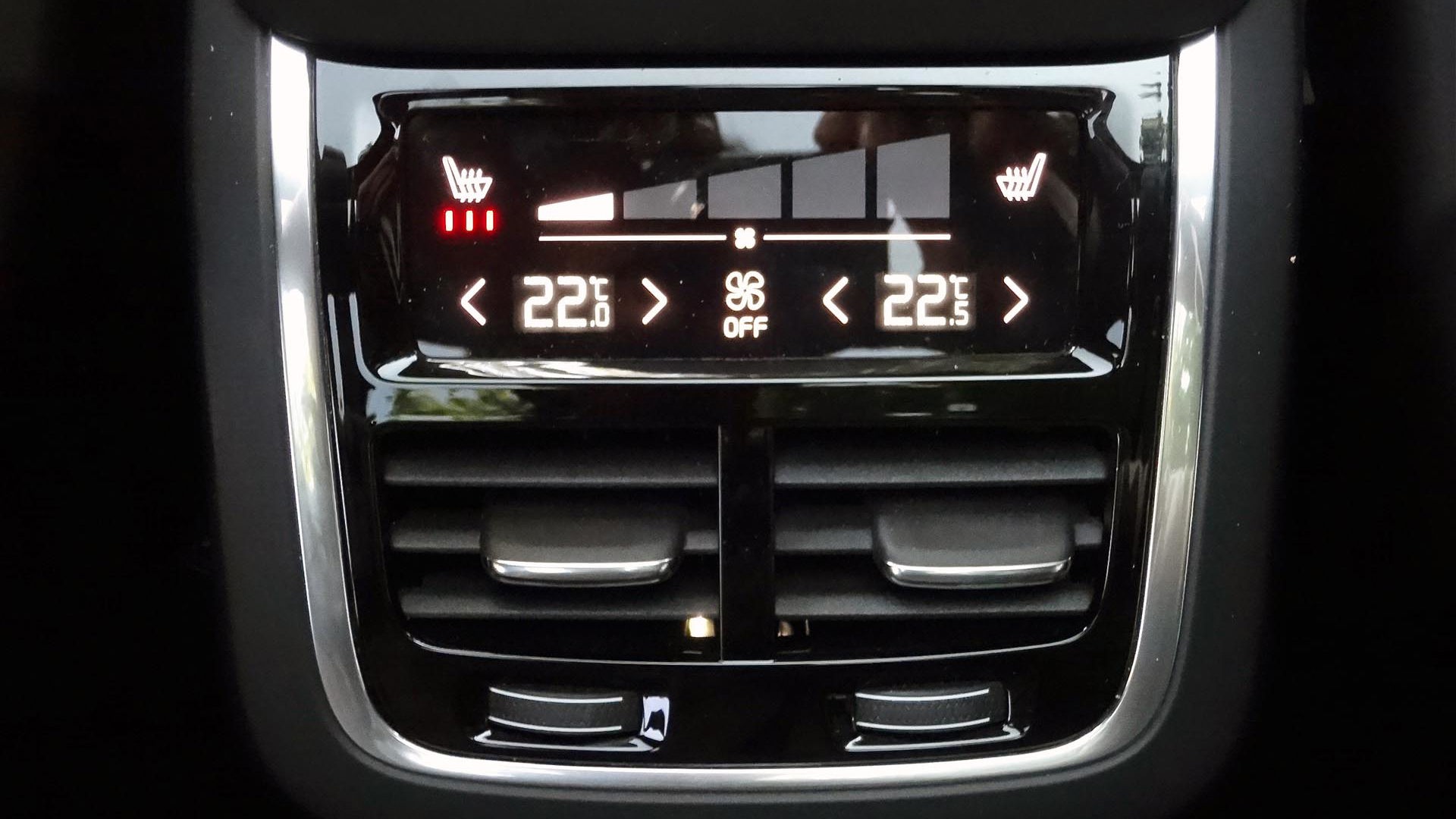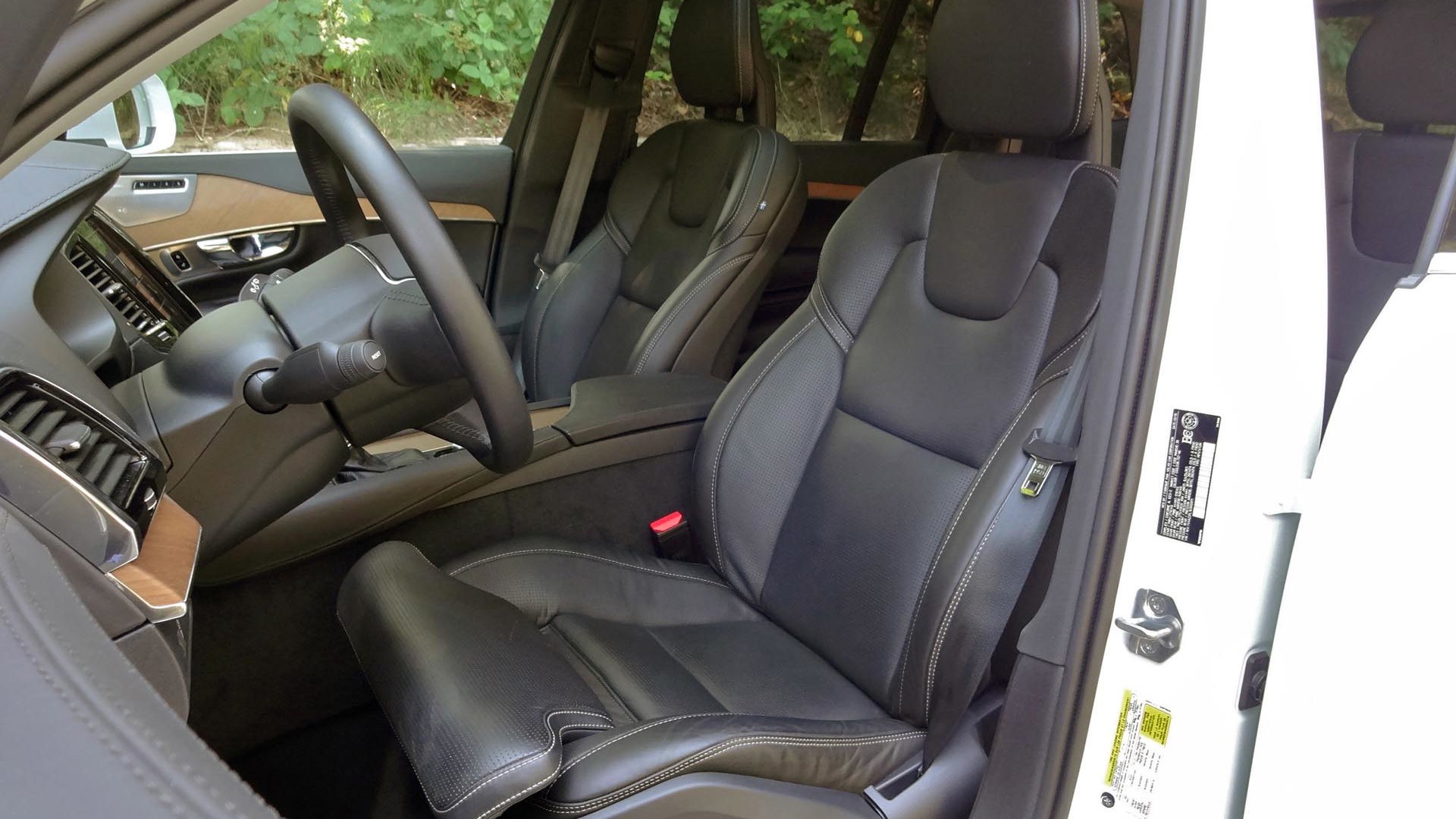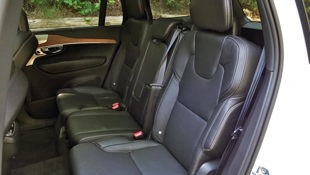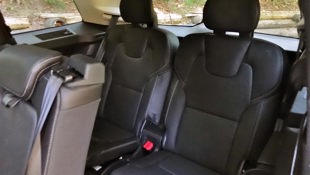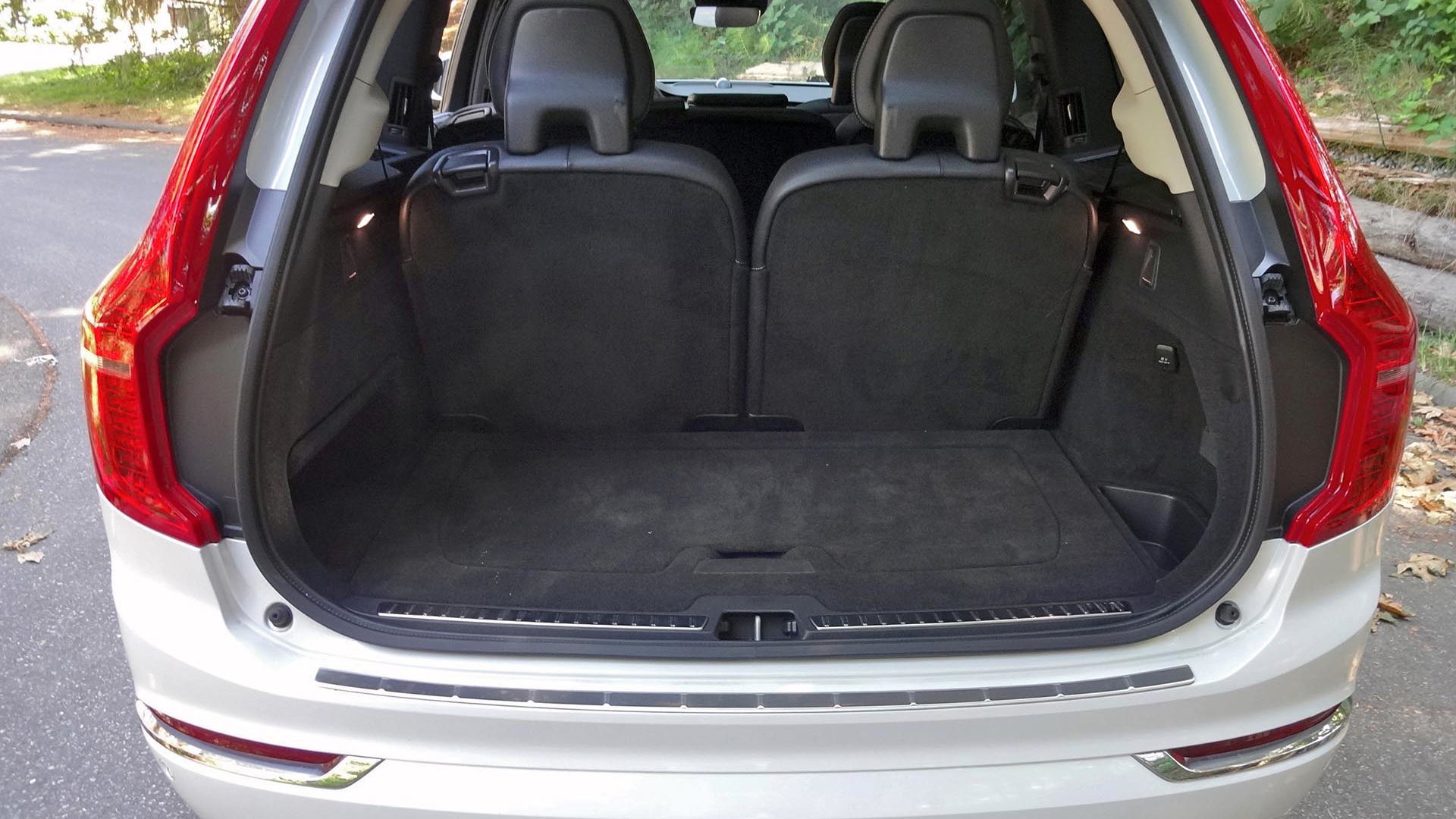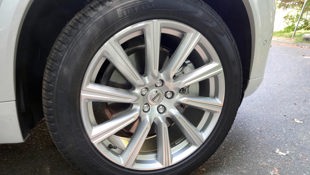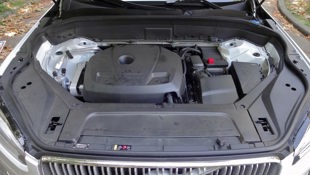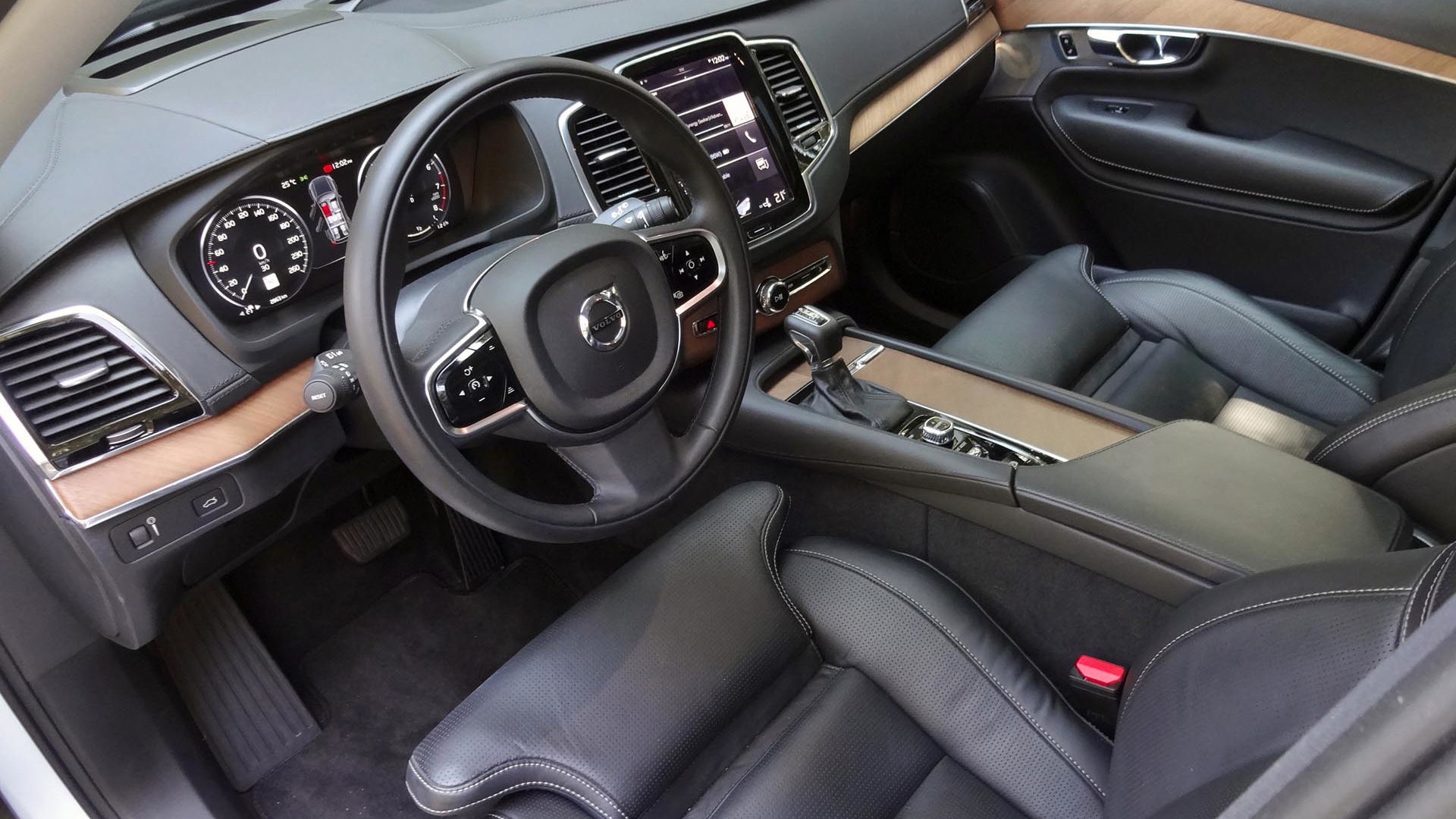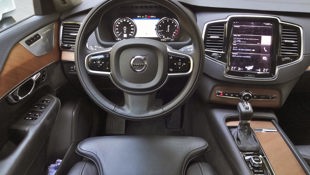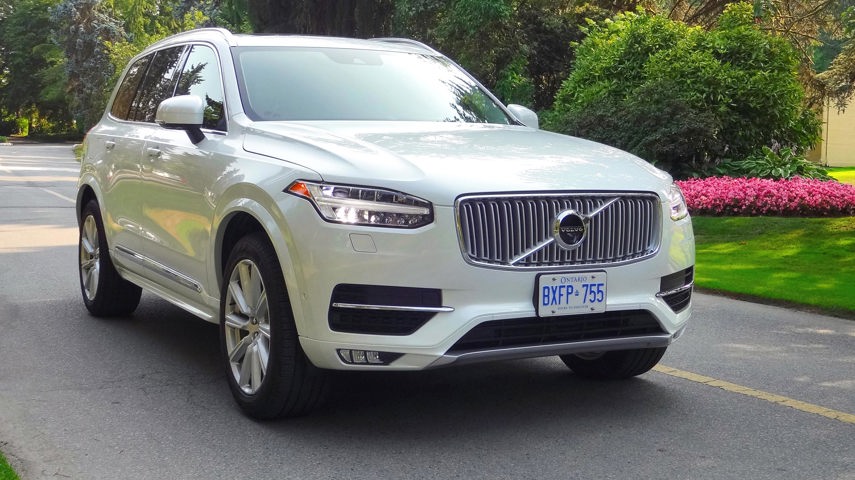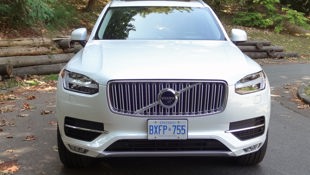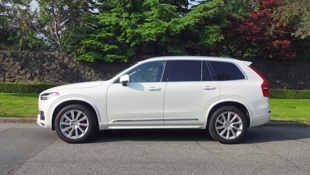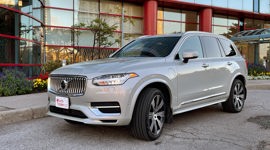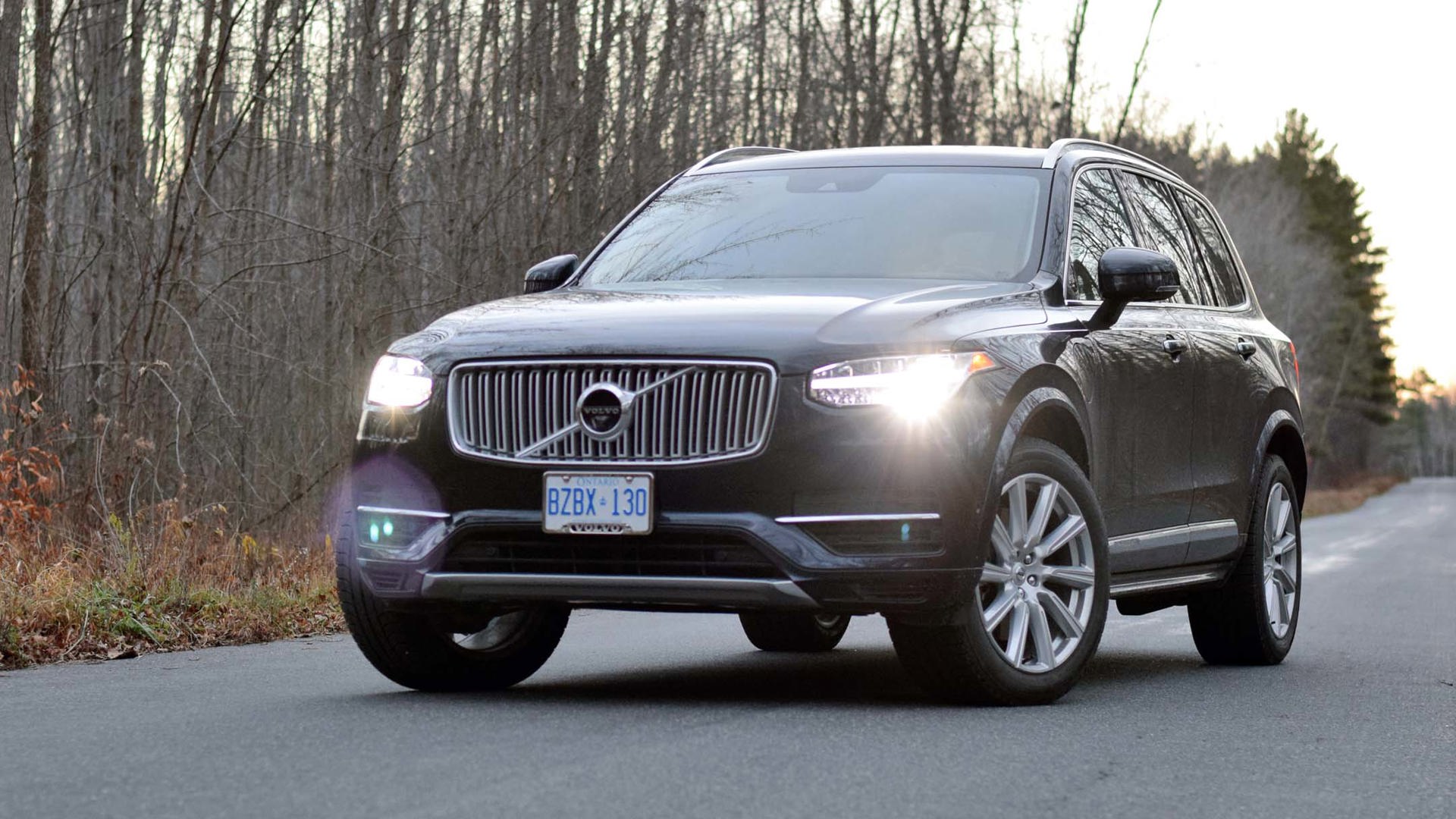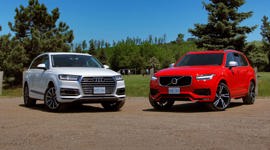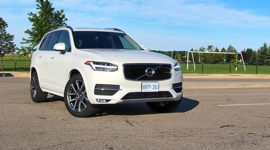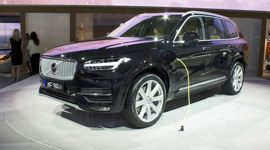From its restyled grille logo and squinty "Thor's hammer" running lights, to its squiggly sculpted taillights and twin chrome-tipped exhausts, the redesigned seven-passenger 2016 Volvo XC90 is much more than your typical model refresh: it's a fully-rendered expression of Volvo's new architecture and style. It's the first vehicle in the Swedish automaker's lineup to use the company's new Scalable Product Architecture (SPA), and the first to bring to market a host of new design details.
Volvo has set out to produce what it envisions as the perfect luxury family hauler, and the heavy hitters like BMW, Audi, Mercedes, Acura and Infiniti had better watch out.
It's also, quite clearly, a gauntlet thrown down at the feet of the German and Japanese luxury brands (although Volvo might argue that Vikings had no time for such niceties as throwing down gauntlets, but instead simply stormed in and conquered). Volvo has set out to produce what it envisions as the perfect luxury family hauler, and the heavy hitters like BMW, Audi, Mercedes, Acura and Infiniti had better watch out.
Stylistically, Volvo's new design language is decidedly modern and understated, in a manner that's somewhat reminiscent of Audi's current style. The XC90 displays Volvo's newly tweaked "Ironmark" logo, with the logo's arrow now rotated a little so it lines up with (and blends in with) the grille's diagonal crossbar. It's a subtle but significant change, reflecting the approach taken throughout. To my eye the XC90's design as a whole works nicely. It looks pleasantly solid and suitably well-crafted, and I reckon it'll withstand the test of time well.
If that sounds like faint praise, it's only because I needed to reserve more potent adjectives for the XC90's interior. The Swedes are renowned for their interior design, and the XC90 takes things up several notches. While the interior design remains as artfully minimalistic as the exterior, it is executed with such style and in such elegant materials as to render it downright sensual. The XC90 is available in three trim levels (Momentum, R-Design, and Inscription) with my test car's Inscription trim representing the pinnacle of luxury. This means beautiful matte-finished woodwork, supple stitched leather, bright and brushed metal trims, soft-touch door lowers, cloth-wrapped pillars and a spectacular sounding Bowers and Wilkins premium audio system. Open the door and settle into the driver's seat and the car welcomes you by automatically turning on the accessories, without the need to press any buttons – very civilized! To start the car, you then twist a diamond-cut knob on the centre console, giving the XC90 a touch of playful quirkiness.
In practical matters, the first two rows of seating are amply spacious (and visually they feel even more so thanks to the giant panoramic moonroof), and even the third row offers reasonable space for teenagers and medium-sized adults, although headroom is a bit tight. The middle-row seats feature separate climate controls, seat heaters, and room to stretch out. The front seats are superlatively comfortable, with near infinite adjustments, plenty of room, and both heated and cooled seats. Outward visibility is reasonably good, but by no means brilliant: Rather than trying to slim down XC90's substantial A-pillars and chunky exterior mirrors, Volvo seems content to instead rely on its impressive suite of safety technology to keep you out of trouble (this includes automatic pedestrian and cyclist braking, and automatic intersection braking if you try to turn in front of an oncoming car). Other driving aids in my Inscription test car included blind-spot assist, lane-departure warning, lane-keeping assist, road-sign information, adaptive cruise control, a head-up display, and more.
With the third-row seating deployed there's 249L of cargo space, which expands to a family-friendly 615 under the cargo cover when you fold the third row, and a capacious 2,427L with all seats down. Folding the seats is easy to accomplish thanks to the self-flipping rear headrests, although I found that the nylon strap for folding the second row's middle section could be a little hard to reach at times.
With the minimalistic interior design eliminating all but the most essential (and legally required) few buttons, the XC90 instead includes a huge vertically-oriented touchscreen in the centre of the dash, which is used to control almost all of the car's functions. The truth is I'm a bit old-school and would honestly prefer a few more redundant hardware switches, but I'll give Volvo credit for ensuring that the Sensus system's interface is reasonably intuitive (especially if you already own a smart phone or iPad) and has enough processing power to keep up with my most rapid swiping and tapping. I was still struggling and cursing a little on day three, but by day six I could find most of the features I needed without taking my eyes off the road for more than a couple seconds (and yes, there's a certain irony in piping vehicle controls through a touchscreen in an era when draconian traffic laws are being introduced against the use of handheld touchscreens while driving).
In terms of use, the big screen allows for an impressively high-resolution backup camera, and Volvo's all-around 360 degree camera view is better implemented than other versions I've previously seen, making it surprisingly easy to manoeuvre the big XC90 even in tight parkades.
For those who still find parking a challenge even with the all-around camera to assist, the XC90 offers its "Park Assist Pilot" automatic self-parking for both parallel and perpendicular parking spots, with self-exit for parallel spots only. The system generally works quite well, and my mother-in-law was suitably amazed. However, it only works for parking spots on the right-hand side of the car, and the XC90 appears to make its own on-the-fly determination of whether available spots are parallel or perpendicular, based on the width of the gaps. On a couple of occasions I had to pass by available spots because the system got messed up and insisted that perpendicular spaces were parallel or vice versa. Also, the automatic perpendicular parking bases itself on the position of other cars, not the painted lines of the parking lot, so depending on how the nearby cars are parked you can get some … umm … interesting results.
The navigation system proved reasonably easy to use, with the exception that I never did figure out how to cancel a routing after it was entered (the best I could do was pause it), and the system wouldn't accept "West 8th Avenue" as an address (that's how we say it here in Vancouver), so it took me a while to figure out that I had to input "8th Avenue West."
I did notice that the big, unhooded, upward facing touchscreen tended to collect a lot of fingerprints and could get washed out in bright light. Volvo's PR folks later pointed out that there's a special cloth supplied to allow you to easily clean the touchscreen, and that you can change the screen theme from a black background to a white background in order to make it easier to see in bright daylight (they also kindly supplied a photo showing this alternate theme).
Mechanically Volvo has bet its future on an all four-cylinder lineup, and the XC90 proves that the concept works even in a vehicle weighing somewhere in the vicinity of 2,000 kg. Thanks to the addition of both a turbocharger and a supercharger, the XC90's 2.0L engine produces a prodigious 320 hp and 295 lb-ft of torque, with a pleasantly subdued exhaust growl that entirely fits the character of the car. Working together with the seamlessly smooth eight-speed automatic transmission the super-turbocharged 2.0L will haul the hefty XC90 from 0-100 km/h in a respectable time of around 6.5 to 7 seconds, depending on whose numbers you believe. And while I never tried towing anything, Volvo says the XC90 will tow up to 2,250 kg. Oh, and if you want more power, there's a hybrid T8 version that develops 400 horsepower with the aid of an electric motor.
All-wheel drive is standard, providing peace of mind on snowy days (the system normally runs in efficient front-wheel drive mode and can feed up to 60 percent of the power to the rear wheels as needed). Also standard is a Drive Mode selector that allows you to choose between Comfort (the standard choice), Dynamic, Eco, Off-Road and Individual modes. My luxury-minded Inscription trim test car didn't include shift paddles (manual shifting is accomplished with the gearshift lever), but the Dynamic mode gave the car an eager and responsive personality regardless, weighting up the steering and sensitizing the throttle so that the XC90 surged forward at the slightest touch. Driven hard in Dynamic mode the XC90 feels surprisingly buttoned-down and athletic, more than a match for the likes of BMW's X5 and Acura's MDX. In Comfort mode the ride remains reasonably taut but not brittle, and the XC90 easily soaked up the bumps along my test-ground stretch of rough beachfront road, with almost no pitching and bucking even over the worst of it.
In terms of fuel economy, Volvo claims the XC90 will manage 11.8 l/100 km in the city and 9.5 on the highway, although in my experience it'll be tough matching the city number. My test car was showing a 15.2 l/100km long-term average after a series of corporate demonstration drives, and I was seeing very similar numbers during my first couple of days around town. A trip to the suburbs and back netted 13.9 l/100 km, and my best result was 10.5 on a relaxed drive along a highway with a 90 km/h limit. The XC90 is equipped with an auto start/stop system to conserve fuel when waiting at traffic lights, and while some have complained about this being a little rough in its engagement and disengagement, I found it to be an improvement over most other manufacturer's systems because it's much more willing to shut down the engine again if you creep forward just a few feet after stopping.
All in all, I was hugely impressed with the Volvo XC90. With a base price of $60,700 for the T6 Momentum, and my Inscription test car starting at $66,800, the XC90 represents excellent value when compared against its direct competitors. Yes, there are cheaper rivals (think Acura MDX and Infiniti QX70) but the Volvo XC90 trumps them in terms of style, technology and equipment. And there are more expensive rivals (think BMW X5 and Mercedes-Benz GL Class), but the XC90 matches or beats them, too, leaving perhaps the Audi Q7 as the closest cross-shopping competitor. If you're in the market for a big seven-passenger luxury crossover, it means you'll definitely want to give the XC90 a look.
| Warranty: 4 years/80,000 km; 4 years/80,000 km powertrain; 12 years/unlimited distance corrosion perforation; 4 years/unlimited distance roadside assistance Competitors: |
| Model Tested | 2016 Volvo XC90 Inscription T6 Drive-E |
|---|---|
| Base Price | $66,800 |
| A/C Tax | $100 |
| Destination Fee | $1,815 |
| Price as Tested | $79,065 |
|
Optional Equipment
Vision Package (auto-dimming mirrors, retractable rear-view mirrors, blind-spot information system, cross traffic alert, visual park assist) — $1,800, Climate Package with head-up display (head-up display, heated outboard rear seats, heated steering wheel, heated washer nozzles) — $2,300, Convenience Package (front and rear park assist, park assist pilot, adaptive cruise control, lane keeping assist, Homelink, grocery bag holder, 12 volt outlet in cargo compartment) — $2,200, Bowers and Wilkins Premium Sound — $3,250, Metallic Paint – $800
|
|




